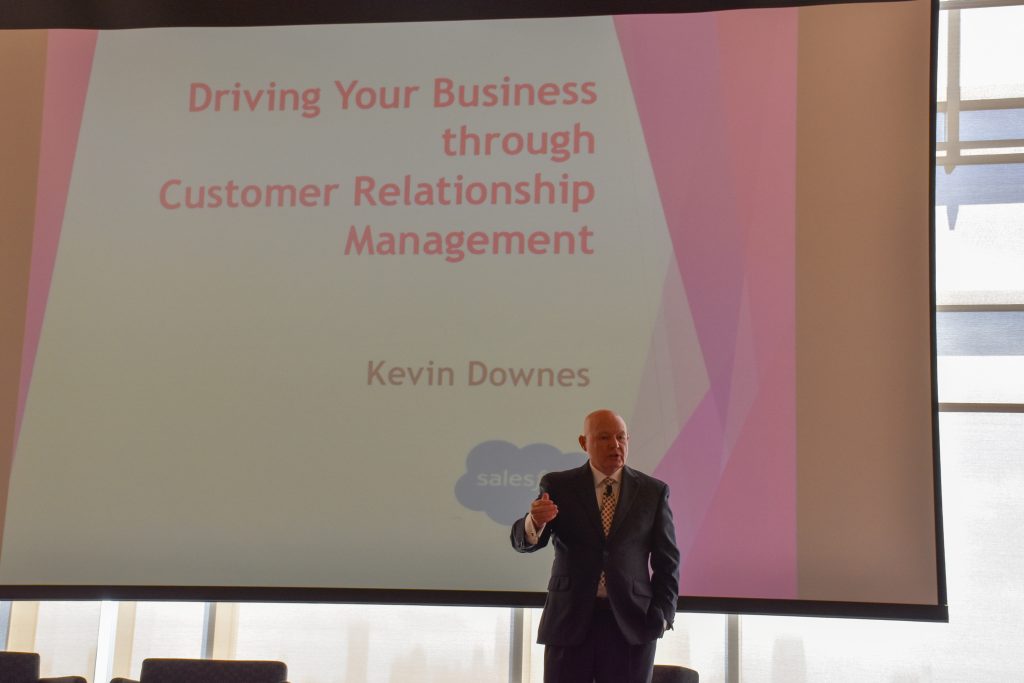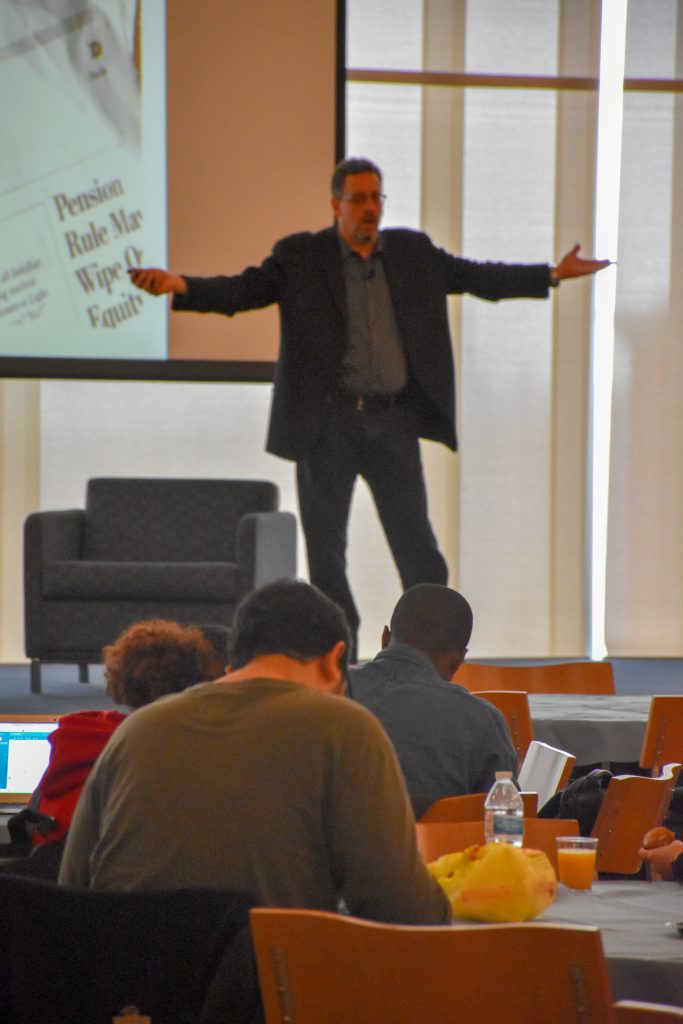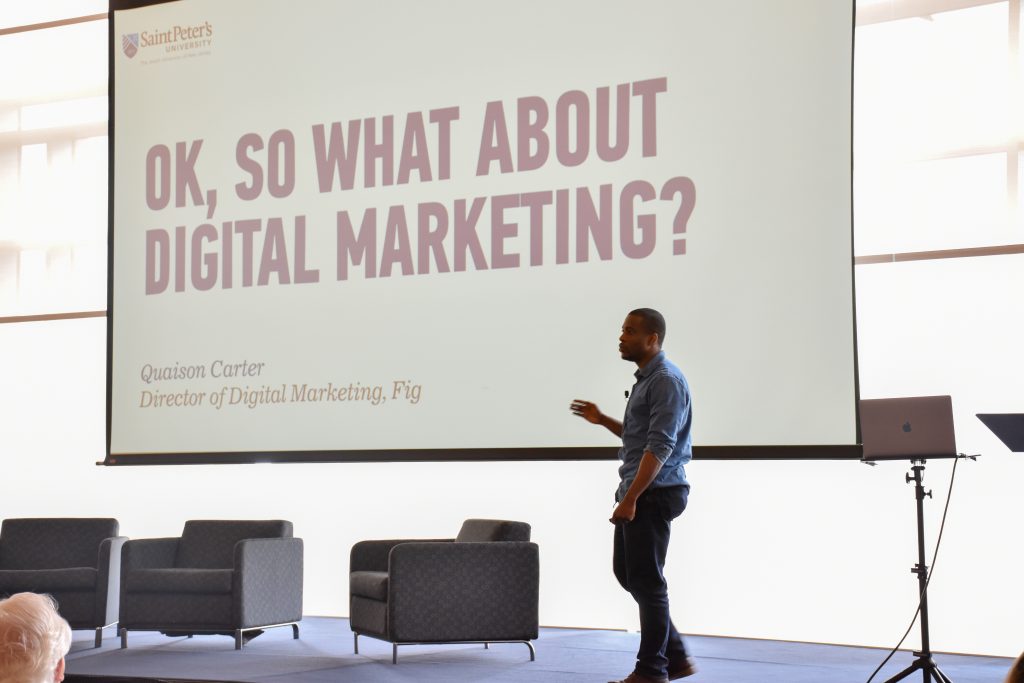
Kevin Downes ’73, Vice President of Sales and Operations at Staples
Tremendous advancements in data analytics and technology have transformed the way marketers reach and interact with consumers. This topic was the focus of the 4th Consumer Analytics Conference that was held at Saint Peter’s University in April. Esteemed guests Kevin Downes ’73, vice president of sales and operations at Staples; Don Sena, editor-in-chief/senior director at Microsoft News; Thomas Fishman, digital media executive; and Quaison Carter, director of organic and performance marketing at Fig, visited campus. Sammy Simpson served as the moderator.

Don Sena, Editor-in-Chief/Senior Director at Microsoft News
Downes gave a presentation titled, “Driving your Business through Customer Relationship Management,” which focused on the benefits of great customer service. He encouraged companies to invest in a CRM (Customer Relationship Management) tool, “With CRM, as soon as a customer contacts your company, your representatives will be able to retrieve all available activity concerning past purchases, preferences and anything else that might assist them in finding a solution,” he said.
Sera presented, “Keeping Integrity Intact: The Mash-up of Traditional Journalism with Personalization and A.I.” The focus of his discussion was how to make user interactions more personalized. In Fishman’s presentation he offered advice to students about understanding the dynamics of change. Lastly, Carter gave an interactive presentation. He asked the students to think of different strategies on how to promote a taco eating contest. He asked them what channel they thought was best.
One student suggested Twitter, because, “you can go viral.” Other students suggested Facebook Live or Pinterest. One student, Ruby Hernandez ’20, who is a business management major, thought that Instagram would be the best fit.

Thomas Fishman, Digital Media Executive
“Facebook is an older generation and people go to Twitter for news. I think Instagram is better suited to promote a taco eating contest,” she said.
Carter went into detail about the quadrants of intent driven marketing channels. The four quadrants are based on prospect quality and conversion probability. For example, banner ads have a low prospect quality and low conversion probability, whereas, marketing companies should be spending their marketing dollars on techniques that lead to high prospect quality and high conversion probability. Direct emails tend to have a higher prospect quality and higher conversion probability because customers have opted in to receive those emails, suggesting that they are interested in the product or service the company offers. An organic search yields the highest prospect quality and conversion probability.

Quaison Carter, Director of Organic and Performance Marketing at Fig
“In order to have a high volume of searches, all marketing should (subtly) reinforce the message and support the brand promise,” said Carter. “Being a good marketer is about how well you understand and speak to the customer’s changing needs and how easy you can make it for that prospect customer to achieve their objective,” he continued.
Carter also stressed that the industry changes rapidly. He reminded the students that the methods they are using today will not be the same in a few years.
“Focus first on the principals of good marketing,” he concluded.
